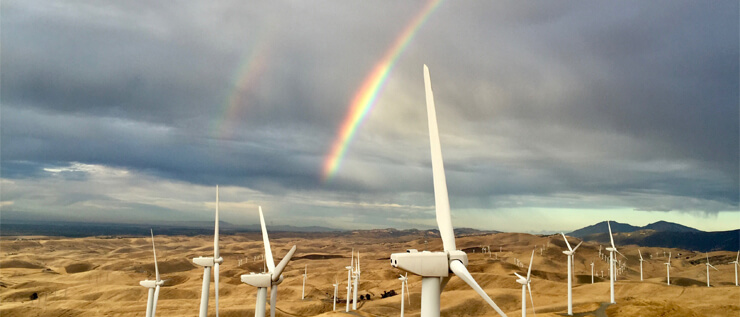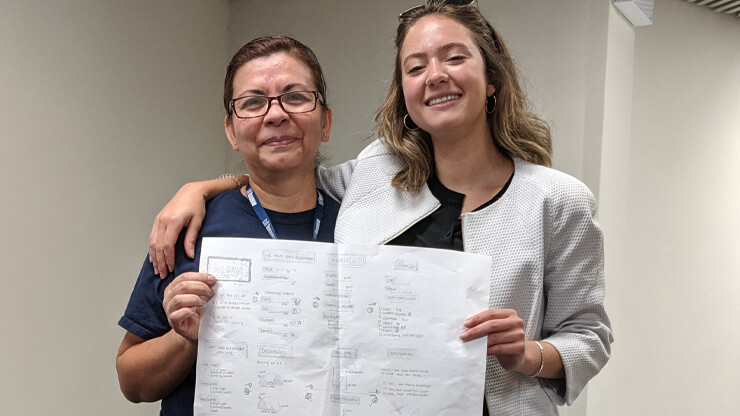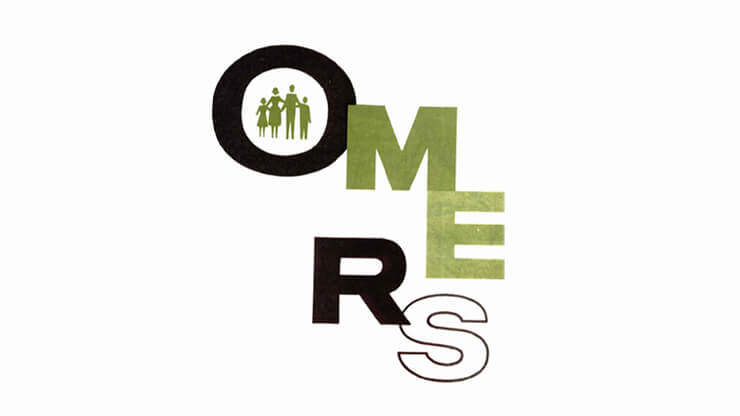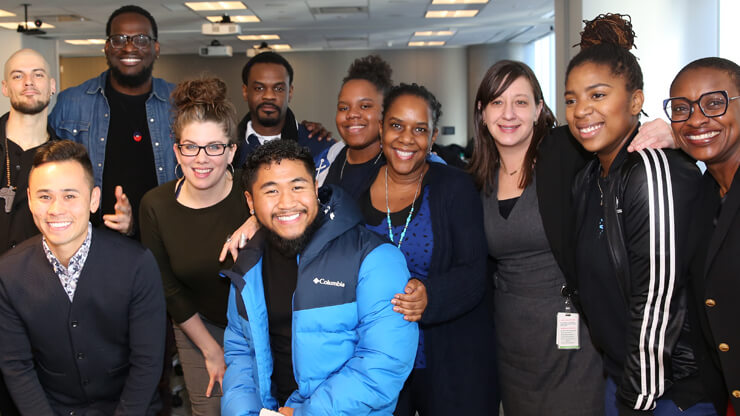OMERS Historical Net Returns
Like our members and employers, OMERS operated in an unprecedented, turbulent environment. The pandemic’s serious and far-reaching health concerns created, among its many impacts, economic and financial instability across industries and geographies. In short, the year was a difficult one for OMERS as an investor and, as a result, our net investment return was a loss of 2.7%, which fell short of our absolute return benchmark for the year of 6.9%.
We want to say, up front and sincerely, that we are not pleased with this year’s result.
|
Net Return (%) |
| OMERS Asset Class |
2020 net return |
2019 net return |
| Bonds |
1.1% |
3.6% |
| Credit |
(4.3%) |
8.0% |
| Public Equity |
1.5% |
20.3% |
| Private Equity |
(8.4%) |
4.6% |
| Infrastructure |
8.6% |
8.7% |
| Real Estate1 |
(11.4%) |
8.3% |
| Total OMERS |
(2.7%) |
11.9% |
1Oxford Properties earned a net return of -6.8%.
The difference between this return and the real estate return presented here relates to how certain assets are categorized. Refer to the full report in the Management’s Discussion & Analysis section for more details.
Three main factors explain this performance gap relative to our benchmark:
-
Widespread lockdowns severely affected the business- and consumer-facing investments in our portfolio, including our investments in retail properties and in the transportation and entertainment sectors. These lockdowns significantly impacted our returns in real estate and private equity and explain more than half of the overall performance gap.
-
OMERS portfolio of high-quality public equities includes significant allocations to dividend-paying financial services and energy businesses. These sectors lost value in 2020, and did not fully recover during the market rally in the latter part of 2020. The impact of sector allocation in our public equities contributed another 20% to the overall performance gap.
-
We saw significant market stress in March and April. At that time, we took a number of actions proactively to enhance and protect the Plan’s liquidity from the possibility of further adverse market events — including reducing our foreign currency hedging positions to mitigate against the risk of significant cash outflows, had the Canadian dollar continued to weaken. These prudential actions achieved their objectives, though they resulted in currency losses, as the Canadian dollar appreciated after we reduced our hedges. This foreign exchange movement particularly impacted our credit assets, which had negative returns despite no material borrower defaults. This activity contributed about 20% to the overall performance gap relative to our benchmark.
In addition to these three factors, long-term bond yields fell steeply in March and April, leading to strong returns for those assets. OMERS prioritizes short-dated, higher-yielding credit investments, with only a small allocation to long-term bonds, whose fair values can be volatile and whose low (or even negative) cash yield is not enough to meet our long-term investing hurdle rate. Likewise, heavy weightings in technology-enabled growth stocks delivered strong returns for market indices during 2020. OMERS has not meaningfully invested in these “new economy” stocks, which generally do not pay stable dividends. Accordingly, our 2020 returns did not materially benefit from these types of gains.
OMERS investment portfolio is diversified by asset class and geography and, despite our aggregate loss for the year, many of our individual investments generated strong returns in 2020. For instance, our infrastructure investments in utility and regulated assets increased in value and generated predictable cash yields.
As a direct result of our loss in 2020, variable compensation awards for the Plan’s investment performance were decreased significantly and in some cases eliminated. This reduced our management expense ratio by 29 bps to 38 bps, relative to 2019.
You can read a more detailed review of the factors that contributed to our 2020 result in Management’s Discussion & Analysis section of our Annual Report, found here.
As we reflect on this year’s investment performance, we believe that the core elements of our investment strategy remain valid, while also acknowledging that our results and the changing environment compel some adjustments. For example:
-
We are evolving our approach to investing in public equities to complement the high quality, dividend-paying names in the portfolio with more new economy stocks.
-
We continue to believe that using our ample liquidity to allocate a significant proportion of our asset mix to high-quality private Investments in infrastructure, private equity and real estate is appropriate: these asset classes, in aggregate, tend to generate high and more stable returns over the long term, having earned a combined average annual return near 10% over the past decade.
-
We continue to deploy new capital in real estate towards sectors that are in high demand, including industrial spaces, multi-family residential buildings and laboratories. We took actions to reduce our exposure to the hotel sector in late 2019, and going forward we plan to reduce our relative exposure to the retail sector.
-
We are increasing our focus on private equity investments in the technology and software space, and reducing the size of our new investments to better manage the risks associated with concentration in large assets.
In 2020 we deployed an additional $6 billion into resilient businesses with promising futures. These include fibre-to-the-home (in support of growing demand for internet use), cold storage warehousing (to meet increasing needs for refrigerated food and other goods) and power distribution (to serve the needs of growing populations and the trend towards electrification, as society transitions to low- carbon energy sources).
-
We are shifting capital towards businesses with lower carbon intensity, including renewable power, where we are pleased to see opportunities for profitable investing. For more on our approach to Sustainable Investing, see the Spotlight Story later in this section.
-
We continue to favour short-duration credit investments because of their lower volatility and higher cash yield, relative to long-term government bonds, which we believe will continue to be unattractive with persistently low interest rates.
-
We are continuing to focus on geographic diversification by deploying assets globally. Specifically, we’re growing our assets in the Asia-Pacific region where demographics and economic growth are attractive; today, 10% of the Plan’s assets are invested there. As we deploy globally, we are reducing the extent to which we hedge foreign currencies. Doing so will free more collateral for long-term investing.
-
We will continue to use leverage prudently to enhance our investment returns and to take advantage of low interest rates. In 2020 we raised $4 billion of long-term debt, which we deployed across our global investments.
The negative performance in 2020 decreased our long-term historical investment returns from 8.2% on a ten-year basis in 2019 to 6.7% in 2020. This level of performance exceeds our year-end 2020 discount rate of 5.85% but is less than the 7% average annual return expectations set by our Board. We believe that our portfolio and the investment strategies that shape it are positioned to capture the returns that we expect to become available once the pandemic abates and economic activity recovers. In the meantime, we believe that emphasis on maintaining liquidity and our approach to asset diversification and quality remains appropriate.
We have also made significant changes to our leadership team. Blake Hutcheson became CEO of OMERS Administration Corporation in 2020 and we now have new leaders for our Capital Markets, Private Equity and Infrastructure businesses, who are profiled below. We also have a new head of Total Portfolio Management, a new Chief Operating Officer and a new Chief Human Resources Officer.

Ralph Berg
Capital Markets
Previously OMERS Global Head of Infrastructure, Ralph becomes OMERS new Global Head of Capital Markets on April 1, 2021. Ralph has served with OMERS since 2013, and by 2015 he was leading the Infrastructure team, overseeing and managing a portfolio of high-quality assets across five continents and steadily generating significant investment returns. Ralph also has extensive previous banking experience with Deutsche Bank and Credit Suisse.
Ralph brings a strong investment track record, a proven ability to build and motivate teams, and a global mindset to this new role.

Annesley Wallace
Infrastructure
Previously OMERS Chief Pension Officer, Annesley succeeds Ralph to become OMERS new Global Head of Infrastructure. Annesley originally joined OMERS Infrastructure in 2012, and by 2016 was responsible for establishing and leading asset management strategies for its North American portfolio of investments. Annesley serves on the boards of Infrastructure Ontario, Bruce Power and the Toronto Region Board of Trade. In 2018, Annesley joined the Pensions team and became OMERS Chief Pension Officer in early 2020. In that role she has been responsible for leading a team that provides all front-line services to our members and employers.

Michael Graham
Private Equity
Mike was appointed the new Global Head of OMERS Private Equity in April 2020 after serving as Private Equity’s Head of North America since 2013. He joined OMERS Private Equity in 2003 and in 2009 he led the opening of the New York City office and our U.S. private equity investing strategy.
Mike is a dedicated leader and a highly accomplished investor who is deeply committed to serving our members and advancing inclusion and diversity at the organization. He is on the boards of Kenan Advantage Group, EPIQ, Premise Health and Inmar Intelligence, as well as the non-profit organization New York Cares.
Blake also has expanded OMERS leadership team, resulting in a more inclusive group that represents virtually every aspect of our enterprise, with more depth, diversity, experience, global perspective and cross-enterprise reach. Collectively, this refreshed team represents multiple countries and backgrounds, with an approximate male/female split of 60/40.
You can read the biographies of each team member here.













